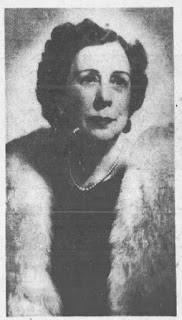Spiritualism is a religious tradition that takes the biblical adage to "try the spirits" fairly seriously. Spiritualists are encouraged to be skeptical, to question the value of the messages brought by spirits, and to test the demonstrations of mediumship put before them.
Spiritualists often use the phrase "evidential" to refer to the factual accuracy of a message given by a spirit through a medium. Today, in most Spiritualist communities, this "evidential mediumship" generally means various forms of mental mediumship (such as clairvoyance) conducted in message services and circles, where the messages given by spirits through a medium are analyzed for facts, as well as the mediums' descriptions of the spirits' appearance and behavior.
While much emphasis now is placed on clairvoyant gifts, in the past many more Spiritualist mediums were more likely to work as trance mediums. Trance mediumship occurs when a spirit blends their auric body with that of a medium, and the spirit is able to speak and act through the medium's physical body and speak with their voice.
There are varying levels of trance mediumship ranging from full conscious awareness of the medium, to a complete unconscious trance state where the medium enters a "magnetic sleep" and is completely unaware of what takes place until the trance has ended.
In the past certain mediums would be put to what was called the "fire test." The test was relatively simple, it was assumed that if the Medium was indeed in a genuine controlled state by a spirit guide, they would be guarded from harm by the higher forces of the spirit world, and would not be effected by the physical effects of fire while in trance. The mediums who passed this test were known as "fire mediums"
E.W. Sprague in his textbook on mediumship wrote, "a fire medium is one whose powers are such that he may handle fire, or heated articles that would burn other people, without his being burned. If one possesses this phase of mediumship, when under the influence of certain spirits, his flesh becomes impervious to fire, and the cuticle is not injured by contact with it."
 |
| An artist's sketch of Isa Wilson Kayner |
At age 25 her mother became seriously ill and near death. Having exhausted all other options, in desperation her father asked his spirit guides for assistance to heal his wife, and his guides told him that Isa could help her mother if she embraced her mediumship. Although Isa at the time still viewed Spiritualism with disdain, she felt if this could save her mother's life she would put her views aside.
During a séance it was revealed that Isa's primary spirit guide was the spirit of a Zoroastrian Priest who went by the name of Ashka. He stated that she was called to be a Spiritualist and she needed to dedicate her life to Spiritualism and mediumship, only then would she be able to heal her mother. She agreed and fell into a trance where Ashka was then able to heal her mother.
Isa believed that because of Ashka's role as a Zoroastrian priest while he was alive, and his service in a Fire Temple attending a Holy Fire, that she was able to work particularly well as a fire medium. She is quoted saying: "When Ashka's spirit possess me I can bathe in fire and it cannot hurt me."
An article described Isa falling into a trance by her guide Ashka and handling glass lamps heated by fire with her bare hands and placing them on her neck and face as if there was no heat. The lamps were then handed over to one of the observers selected at random by the audience and they immediately dropped the glass lamp the moment it touched their hand due to the heat.
An article stated that during one of her travels teaching Spiritualism, a barn caught fire where race horses were kept, and were trapped by the flames. She called on her spirit guide and she was able to walk through the flames, throw her coat over a horse, walk it out of the barn, and repeated this six times with both herself and the horses untouched by fire. She stated "fire will not burn anything I touch so long as I touch it"
Although Isa was most famous for her role as a fire medium, she was primarily a spiritual healer. She stated that she believed that her connection to fire assisted her in being a better Healer. Isa dedicated her entire life to traveling throughout the United States practicing spiritual healing, offering demonstrations of Mediumship, and preaching the message of Spiritualism.

















